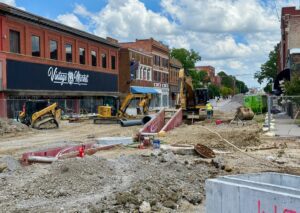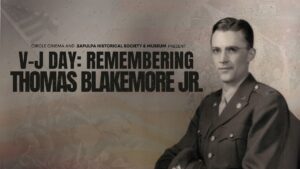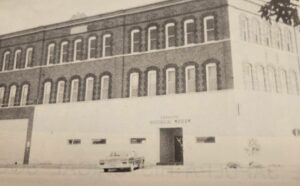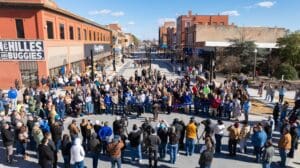Rachel Whitney, Curator,
Sapulpa Historical Museum
The infamous lyrics and catchy tune of the Village People singing “Y.M.C.A.” that and along with the arm gestures to make out the letters of the title, have been infused in people’s minds since the song came out in 1978.
Long before the song, the YMCA was established in 1844 in London. The organization, Young Men’s Christian Association, practiced “healthy body, mind, and spirit.” Today, the organization in the US carries the name The Y, but the 180 year old institution has several branches and covers many needs of the population, such as Young Men’s Hebrew Association (YMHA) in 1854 and the Young Women’s Christian Association (YWCA) in 1855.
“In the US, the YMCA began building single room occupancy facilities in the 1880s to house people from rural areas who moved into cities to look for work.” These places of work included the town of Sapulpa.
This week in Sapulpa history, Sapulpa opened its YMCA in 1905. A few years later, Sapulpa would open its partnering facility, the YWCA, by January 1922.
With great fanfare the new YMCA was opened on the 14th of February, 1905. The building was located on the north end of Elm Street on the Frisco right-of-way. The building was brick with two stories and a basement. The name across the top of the building read: Frisco System Y.M.C.A., and was referred to as the “R.R.Y.M.C.A.” for the railroad. It was established with Frisco to ensure a place for railroad workers to stay.
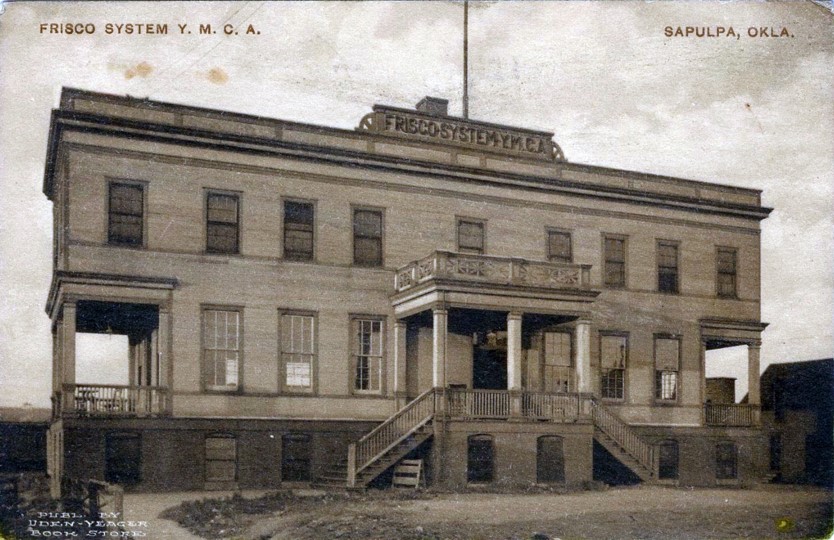
A large gathering crowded the newly open facility. “The Y.M.C.A. building could not hold the vast crowd of people that gathered to witness the dedication and opening ceremonies. The porch was packed with people and they stood around in the yard.”
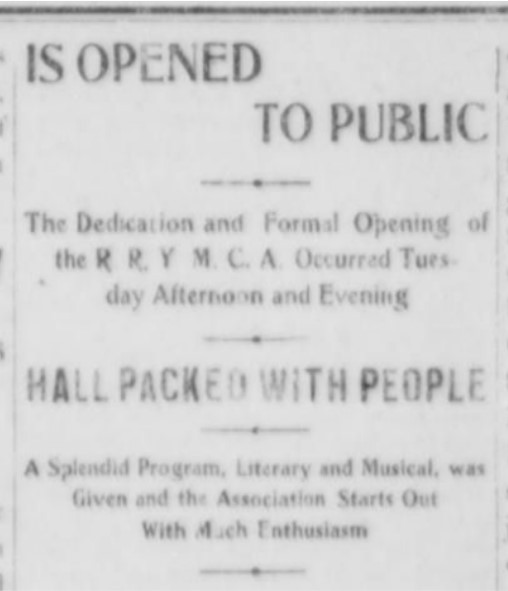
The top floor had sixteen rooms with thirty-two beds. These rooms were only used by the railroad men. The first floor was divided into offices and reading rooms. The folding doors were used on this floor so that they may be opened for large social gatherings. The basement had a gymnasium, bath rooms, and the boiler room. The gymnasium was outfitted with a modern layout, with horizontal bars, chest exercises, striking bag, dumbbells, clubs, and many other items. With an additional six bathrooms and three shower baths, located next to the gymnasium, it also had hot and cold water for use any time of the day.
“The doors of the Sapulpa R.R.Y.M.C.A. are now open and will never be closed again, day or night. The building is handsomely arranged inside and is an ideal home for the railroad boys and citizens. Sapulpa is proud of it, the Railroad Co. is proud of it, and visiting associations are proud of it. It is something of which to be proud.”
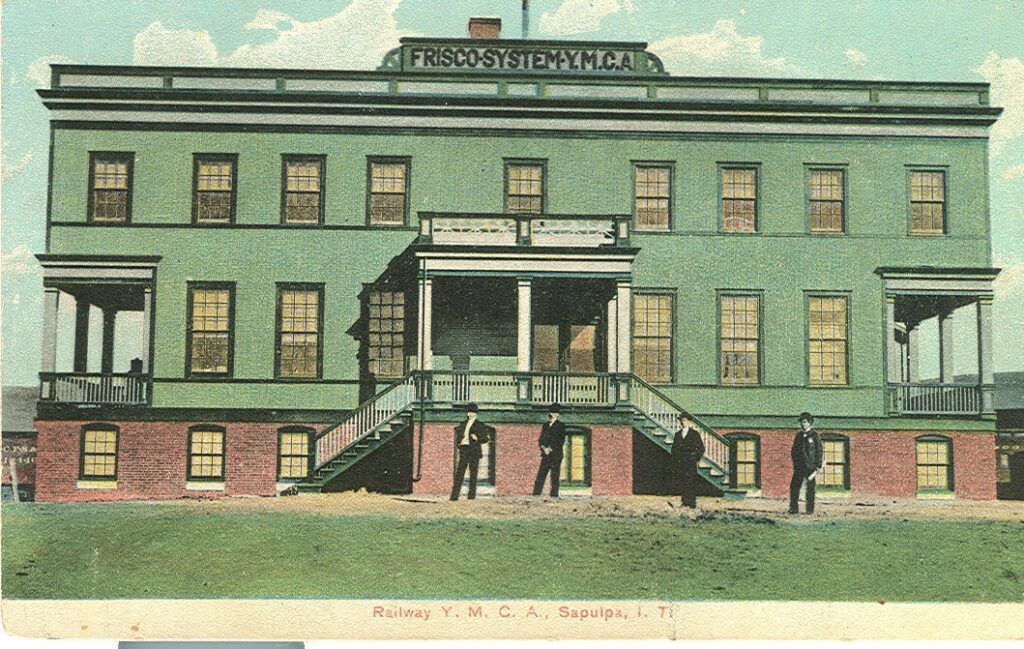
The Sapulpa YMCA closed around 1934. The beginning of demolishing began on March 26, 1934. “Colorful days of early Sapulpa were turned over in the minds of many today as workers began the task of razing the Railroad Y.M.C.A.”
As it was being torn down, the newspaper claimed the building was the first of its kind in Indian Territory. “The Y.M. was the first of its kind in the state and for many years was the only one in Oklahoma. At one time when this city was in the heart of railroad activity, hundreds of Frisco employees found lodging here in the Y.M. Earlier than 1904, the city of Sapulpa was over-run with railroad workers who followed the trade. Accommodations were almost impossible,” until Sapulpa’s Frisco System Y.M.C.A. It was the end of a 29-year era.
Between 1922 and 1934, the city of Sapulpa housed both YMCA and YWCA. The YWCA, on the other hand, had a little trouble opening. However, it would be around for over 45 years in Sapulpa.
The YWCA did not begin in their own building, built from scratch to fit their needs. Years of planning and funding, and purchasing a building in the downtown area became complicated. A building on Lee Ave had been through changes, with businesses, owners, and workers. As it was being constructed, the Wills Building was “considered by the county commissioners for a courthouse and jail.” This is when the old courthouse, the Lucile Opera House, was condemned.
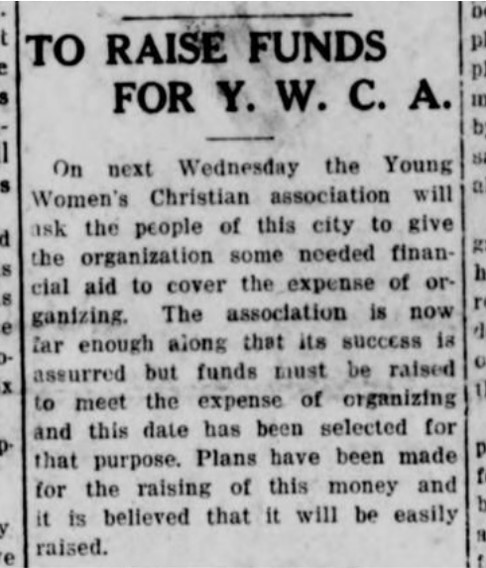
However, it was decided it was impossible to place jail cells in the building.
This building was known as the Wills Building, built in 1910, which housed the Lee Hotel, on the second floor from 1910 to 1920, also had several businesses and offices occupying the whole building. Business like photo studio, plumbing, cafe, ice cream store, and a Maytag store could be found on the first floor over the years. On the third floor, one could find the Beeson’s Business College and dances later in the building’s life.
On September 10, 1920, about 200 women and girls met at the library basement to organize the YWCA. The newly founded organization set up a contract with the library to use the basement as a meeting room for $600 a year.*
*Note: this would be roughly $10,000 today.
Just a few short months later, on January 14, 1921, at the meeting, a discussion was planned for a place for the YWCA women to live. At the time, the Wills Building was for sale for $18,000.*
*Note: this would be around $300,900.
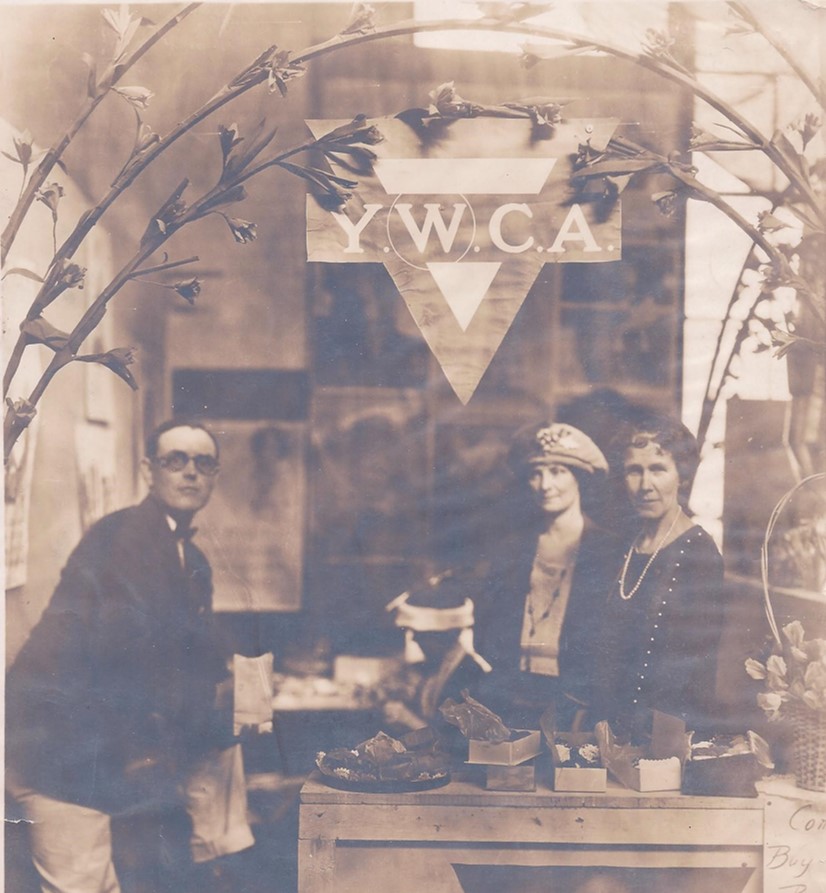
By April, $10,000 was paid on the Wills Building by the YWCA, but still needed help to secure the place.
This week in Sapulpa history, in 1922, the headlines read: “Y.W.C.A. is in sore need. Obligations must be met or institutions will have to close up. Ladies of the city called to discuss plans for relieving ‘Y’ of an embarrassing situation.” The purchase of the handsome three-story Wills Building as a YWCA home for young women proved a severe drain on the finances.
“The Y.W.C.A., one of Sapulpa’s cherished institutions is facing the alternative of immediately raising between $8,000 and $9,000 or closing up.” At the end of the month, “large sums to assist Y.W.C.A.” read the headlines. The 40 women of the Sapulpa YWCA were able to raise $1,500.
In less than a year, YWCA opened its doors at the corner of Lee Avenue and Water Street. In January 1922, the Wills Building changed over to the YWCA. Various clubs pledged for furnishings for the rooms for the women. Organizations reached out such as the First Methodist Church, Presbyterian Church, Good Will Club, Rotary and Kiwanis Clubs, Daughters of the American Revolution (D.A.R.), and many others. A “well fitted kitchen” would be provided for the girls to cook their own meals and a living room would be provided at the head of the stairs for “social gathering.”
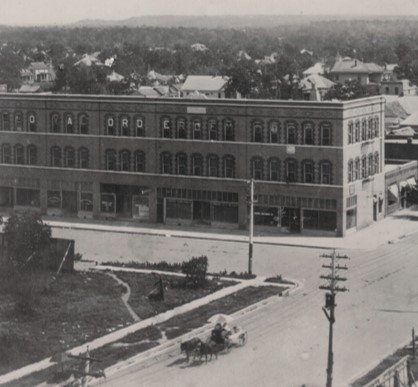
In the YWCA, there were many rules for the women, such as notifying the House Mother before leaving, to use the phone for long-distance calls, you must receive permission from House Mother, piano and radio must not be played after eleven o’clock at night, it was also believed no male visitors were allowed upstairs, and some others rules were meant to be followed. The House Mother also had to supply ice delivery, the House Mother was in charge of her own meals, linens should be distributed once a week and checked, and a few others.
The YWCA remained until 1967 and 1968. The building once again changed hands; at 100 East Lee Ave, the Wills Building, belongs to the Sapulpa Historical Society and houses the museum.
(Sapulpa Herald, June 7, 1920, April 30, 1920, September 21, 1921, November 27, 1923, March 26, 1934; Sapulpa Light, November 18, 1904, February 17, 1905, August 25, 1905; Sapulpa Daily Herald, May 8, 1983, September 18, 1983, April 21, 1991)


